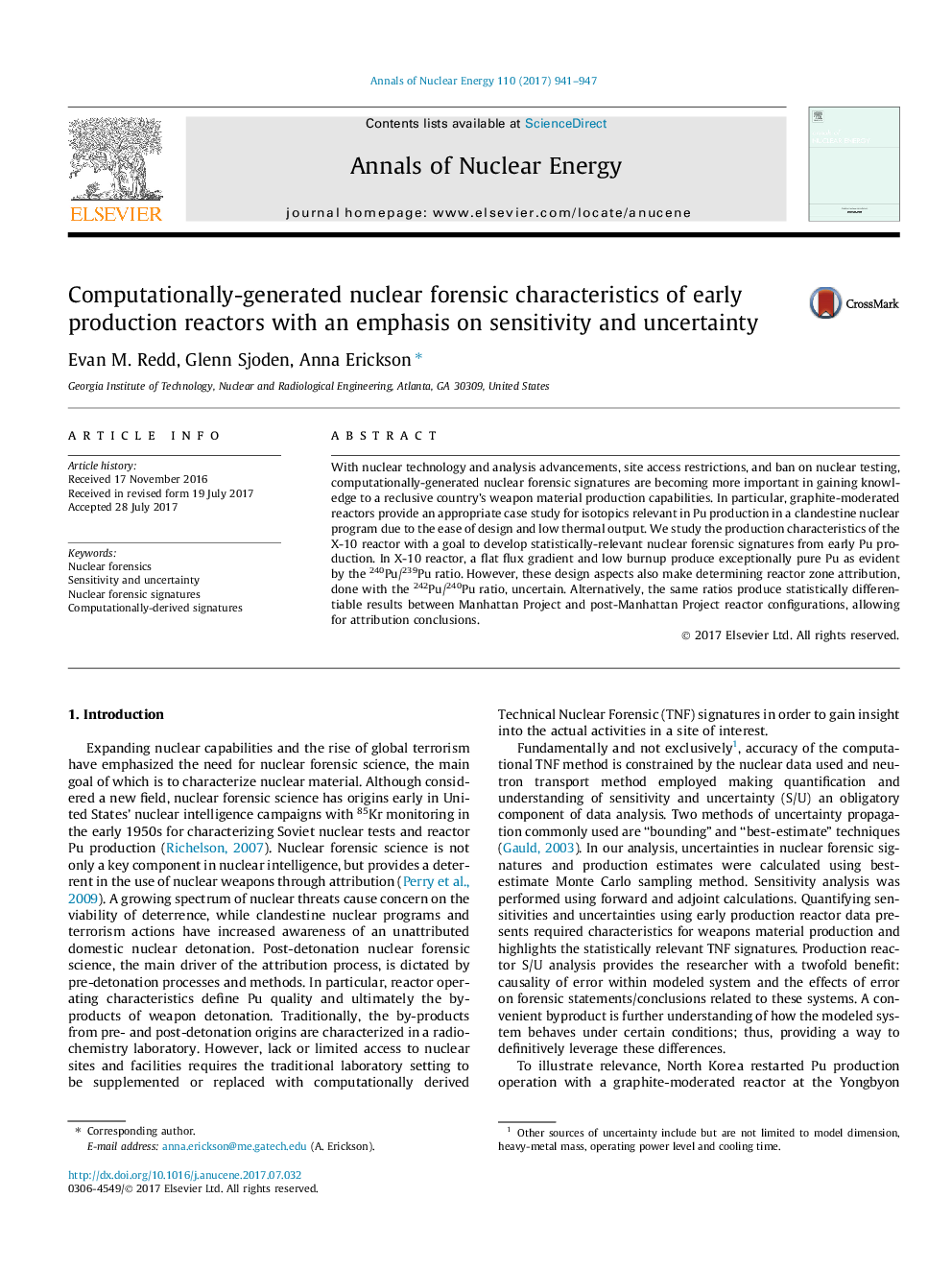| Article ID | Journal | Published Year | Pages | File Type |
|---|---|---|---|---|
| 5474991 | Annals of Nuclear Energy | 2017 | 7 Pages |
Abstract
With nuclear technology and analysis advancements, site access restrictions, and ban on nuclear testing, computationally-generated nuclear forensic signatures are becoming more important in gaining knowledge to a reclusive country's weapon material production capabilities. In particular, graphite-moderated reactors provide an appropriate case study for isotopics relevant in Pu production in a clandestine nuclear program due to the ease of design and low thermal output. We study the production characteristics of the X-10 reactor with a goal to develop statistically-relevant nuclear forensic signatures from early Pu production. In X-10 reactor, a flat flux gradient and low burnup produce exceptionally pure Pu as evident by the 240Pu/239Pu ratio. However, these design aspects also make determining reactor zone attribution, done with the 242Pu/240Pu ratio, uncertain. Alternatively, the same ratios produce statistically differentiable results between Manhattan Project and post-Manhattan Project reactor configurations, allowing for attribution conclusions.
Related Topics
Physical Sciences and Engineering
Energy
Energy Engineering and Power Technology
Authors
Evan M. Redd, Glenn Sjoden, Anna Erickson,
